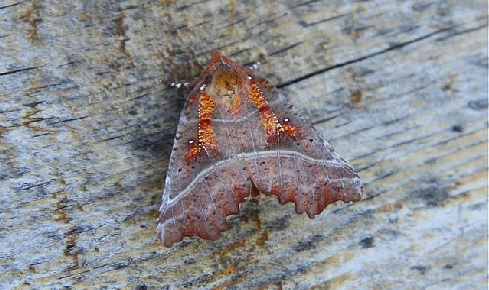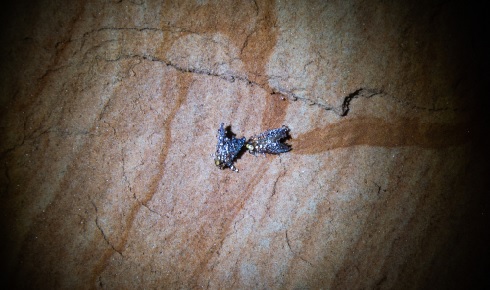On record: Latent Lepidopterans

Look out for hibernating moths and butterflies, seemingly frozen to the spot, to help inform our understanding of insect populations in winter
13th December 2021
Autumn and winter are not often lauded as the prime time for recording Lepidoptera (butterflies and moths). This can lead to a recording bias whereby the ecology of winter-active insects is comparatively poorly known. However, crucial data can be gathered by citizen scientists.
Lepidopteran species employ various strategies to help them endure the colder months, with many having a period of dormancy. These overwintering stages are typically more difficult to record in the egg to pupa stages, due to the difficulty involved with both identification and discovery. However, in the moths that weather the cold as adults, dormancy provides ample opportunity for recording.
In most cases overwintering insects in feeding stages (larvae and adults) employ a process known as supercooling. This involves increasing the levels of cryoprotectants within the body’s fluids, which allows water to remain liquid at temperatures below its freezing point due to the inhibition of ice crystal growth. The digestive system must also be cleared of any food particles from which lethal tissue-damaging ice crystals can develop. This can only occur with the cessation of feeding, restricting the Lepidopteran to a single sheltered spot where they will spend the winter. This, of course, helps us to find and record these species.
 Overwintering adult moths can provide a great opportunity for recording species
Overwintering adult moths can provide a great opportunity for recording speciesOne of the most striking of the UK’s overwintering Lepidopteran species is the herald moth (Scoliopteryx libatrix). While its rust-tinted and scalloped wings make it ideal for resting inconspicuously within leaf litter during the spring and autumn, during winter it is commonly encountered hibernating gregariously in structures such as barns, sheds, caves and mines.
You may also encounter hibernating butterflies. Of the five British butterflies that regularly overwinter, two (the comma and the brimstone) hide in thick vegetation while the other three (peacocks, small tortoiseshells and red admirals) prefer hollow spaces, including our homes.
How to get involved
In Scotland, Butterfly Conservation is running the ‘Hibernating Heralds’ project and records can be submitted through the Hibernating Heralds activity on the Biological Records Centre’s iRecord website. Elsewhere in the UK, records of this species can also be submitted using the iRecord website or app or directly to the National Moth Recording Scheme (NMRS), the details of which can be found here. Not all moths are inactive over the winter months, with some coming to moth traps and security lights right through Christmas and the new year. These can also be recorded via the NMRS.
The iRecord Butterflies app is also an invaluable resource, allowing both the identification and recording of the UK’s butterflies, including those you may be lucky enough to find in the winter months.
James McCulloch is an entomologist and the winner of the inaugural Gilbert White Youth Award for terrestrial and freshwater recording


